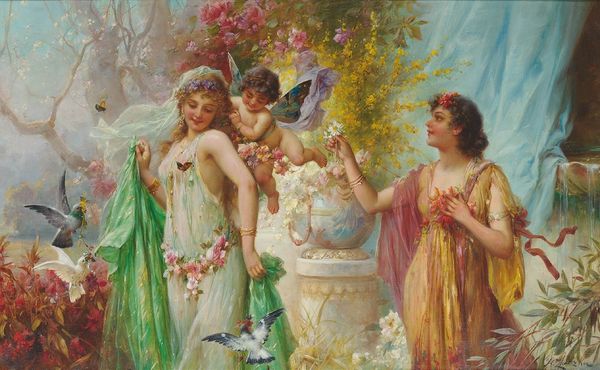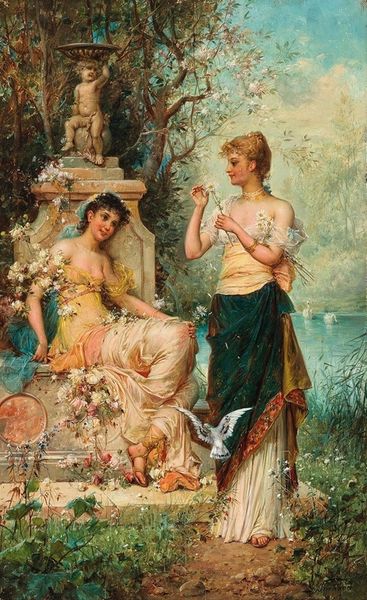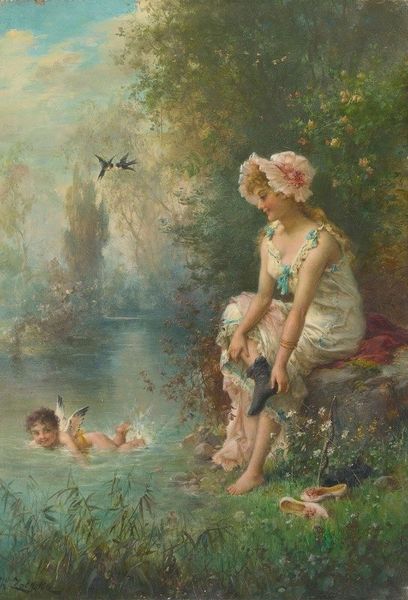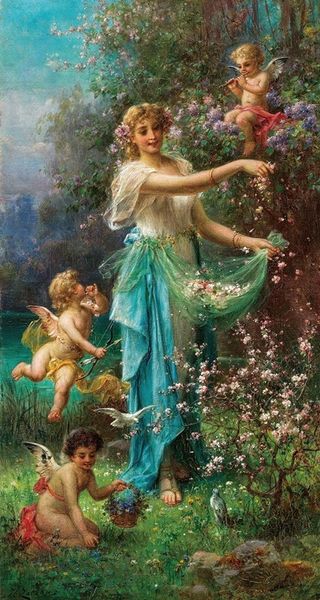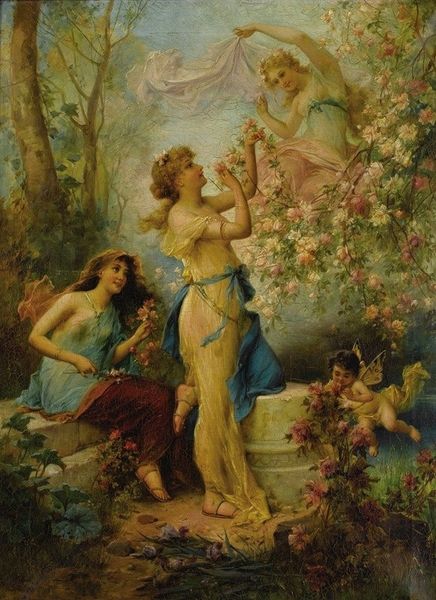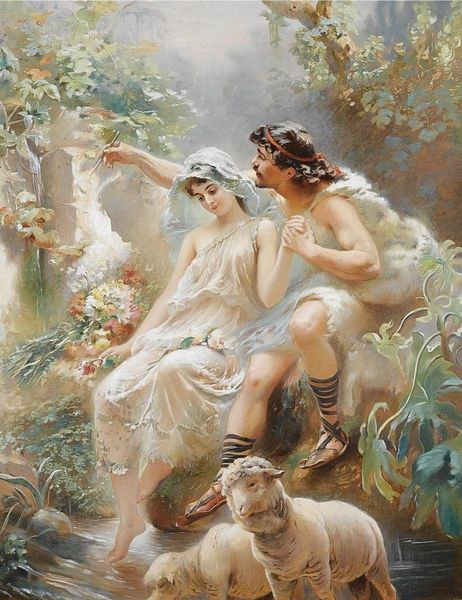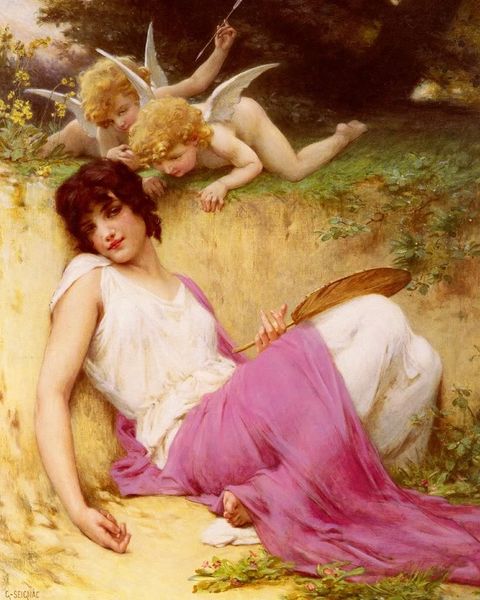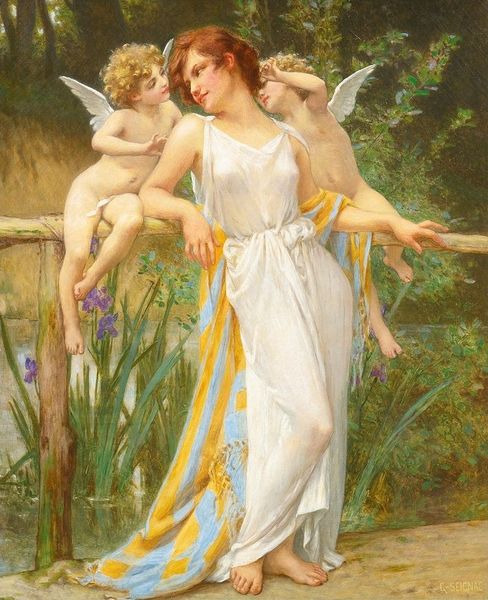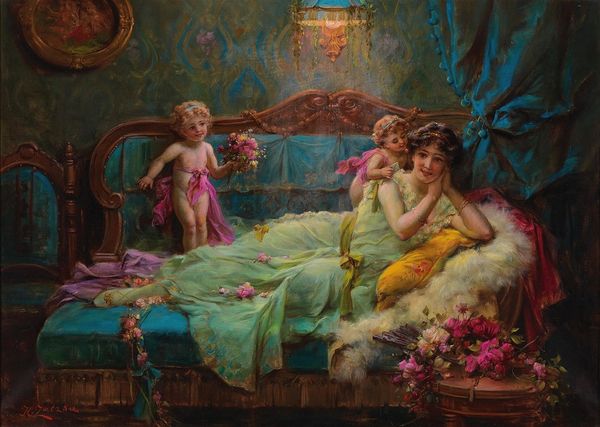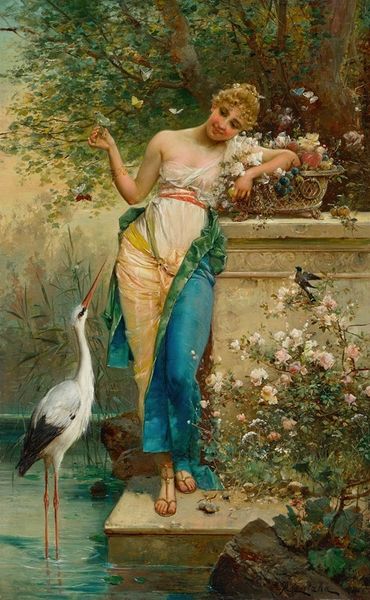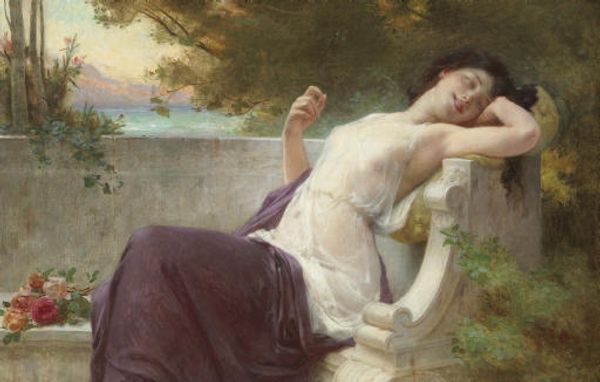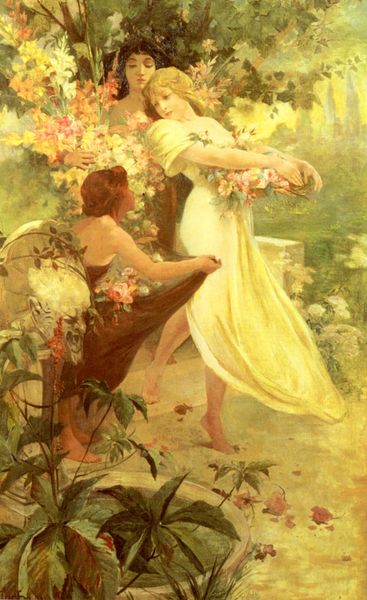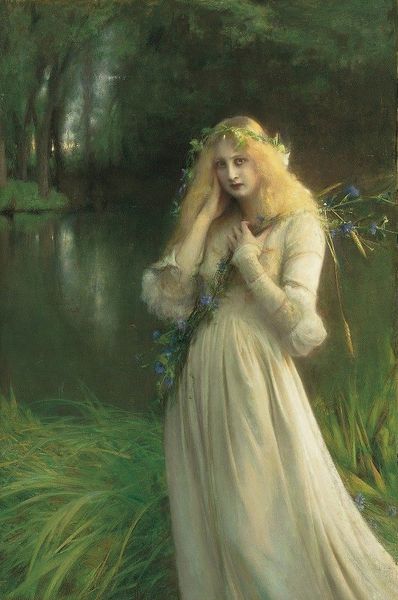
oil-paint
#
fantasy art
#
impressionist painting style
#
oil-paint
#
landscape
#
fantasy-art
#
figuration
#
romanticism
#
history-painting
#
nude
Copyright: Public Domain: Artvee
Curator: This feels like a fever dream after reading too much Shakespeare on a summer night. All hazy edges and gossamer gowns. Editor: It certainly has that dreamlike quality. What you're seeing is Hans Zatzka's *Nymphs at Dawn*, an oil painting steeped in Romanticism. It’s part of a larger tradition of imagining idealized, feminine figures inhabiting classical landscapes. Curator: Idealized is one word for it! Those figures, though… they’re carrying candles on their heads. Is that…practical? I’m picturing a disastrous dip in the river. Editor: The candles are a fascinating detail. Consider them symbolically—as stand-ins for enlightenment. They're visually arresting but also rooted in concepts of illumination and knowledge, frequently assigned to women during that time. The river may also represent themes of cleansing or rebirth. Curator: Okay, I can get behind symbolic candles, but my immediate reaction is, well, those nymph ladies look awfully European. Given the loaded history of the “nymph” archetype, is it just me or is this pushing into some dicey territory? Editor: Precisely. Zatzka paints these women with an aesthetic that leans heavily into early 20th-century European beauty ideals, arguably upholding and celebrating whiteness as the pinnacle of female beauty. It's crucial to critically assess how these representations contribute to a history of exclusion. Whose idea of beauty are we celebrating? Curator: Good point. Even the landscape feels… safe, manicured. Like someone’s idea of untouched wilderness, rather than actual wild nature. I wonder what it means that such seemingly innocent imagery carried so much historical baggage? Editor: This particular interpretation of classical subjects normalizes colonial-era fantasies. How different it would be to see similar mythological themes re-envisioned through non-Western artistic lenses and cultural traditions, offering other representations of feminine power and mythology. Curator: That’s really shifted how I see it. I suppose I’ll walk away thinking not just about the shimmering fabric and idyllic light, but also the critical questions it raises about who gets to be centered in beauty and mythology. Editor: Indeed. It asks us to consider what this idealized world obscures and who it excludes from its serene, candlelit dawn.
Comments
No comments
Be the first to comment and join the conversation on the ultimate creative platform.
